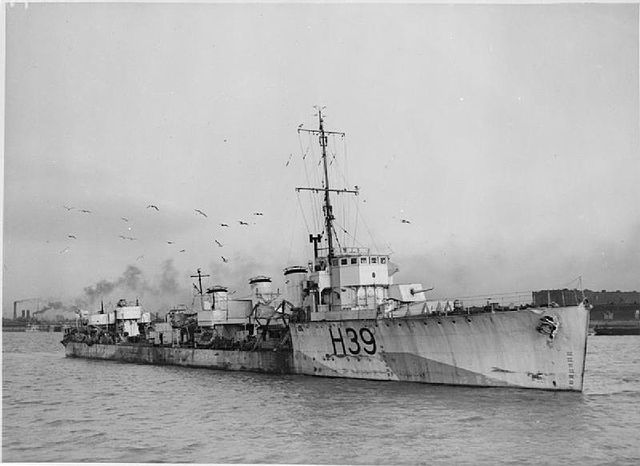HMS Umpire was a modified Admiralty R-class destroyer which served with the Royal Navy. The Modified R class added attributes of the Yarrow Later M class to improve the capability of the ships to operate in bad weather. Launched on 9 June 1917, the ship operated with the Grand Fleet during World War I as an escort to a squadron of light cruiser and took part in the Second Battle of Heligoland Bight. After the Armistice, the vessel continued to serve and gained fame when, after rescuing the charity's founder from drowning in 1924, the name of the first house opened by what would become Veterans Aid was named H10 after the destroyer's pennant number. Umpire was sold to be broken up in 1930.
Sister ship HMS Tower during sea trials
The first R class were a class of 62 destroyers built between 1916 and 1917 for the Royal Navy. They were an improvement, specifically in the area of fuel economy, of the earlier Admiralty M-class destroyers. The most important difference was that the Admiralty R class had two shafts and geared turbines, compared with the three shafts and direct turbines of the Admiralty M class, but in appearance the R class could be distinguished from its predecessors by having the after 4-inch gun mounted in a bandstand. The Admiralty ordered the first two of this class of ships in May 1915. Another seventeen were ordered in July 1915, a further eight in December 1915, and a final twenty-three in March 1916.
HMS Skate in 1942
Image: HMS Romola 1916
Image: HMS Satyr 1916
Image: HMS Undine 1917





